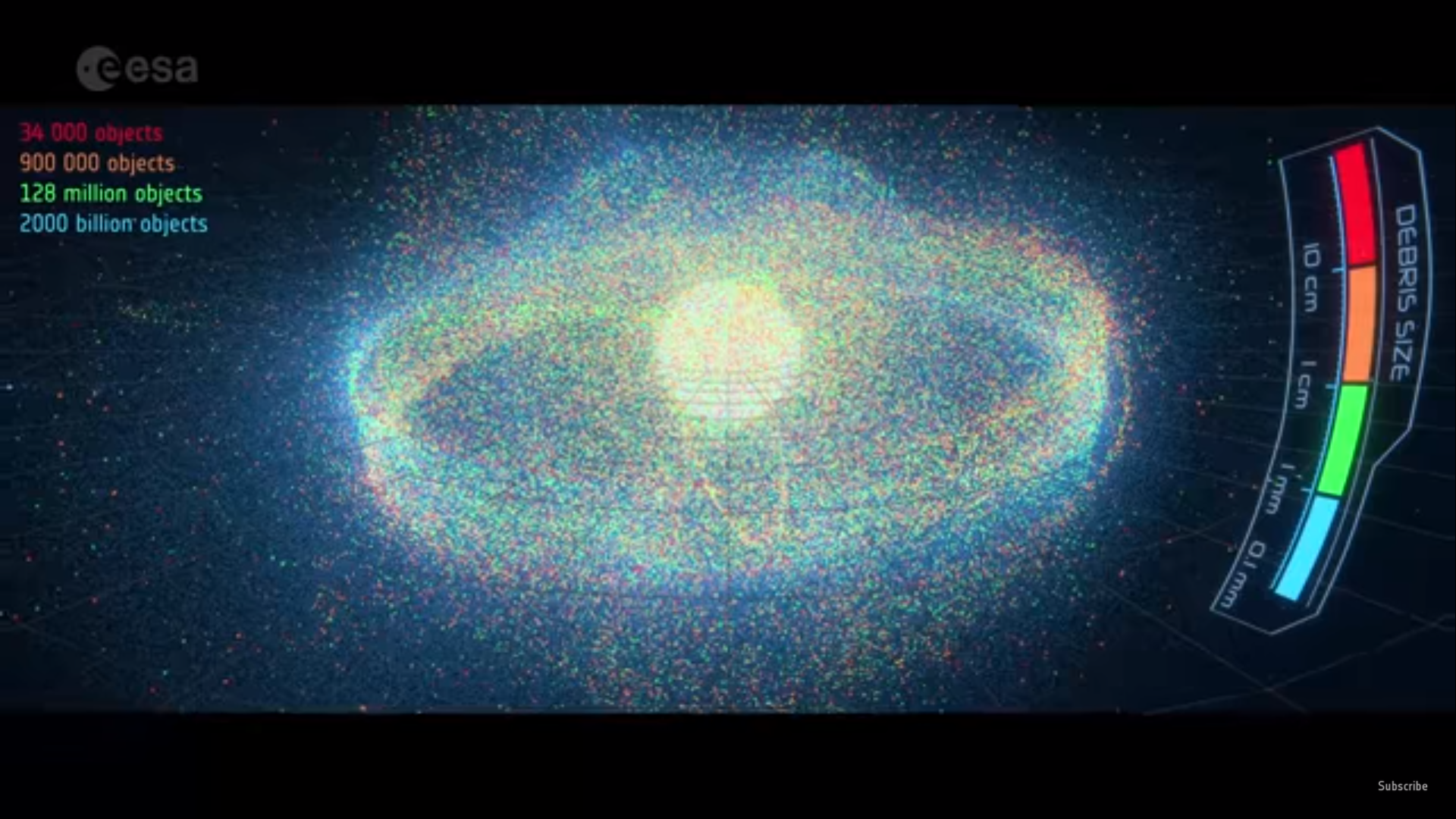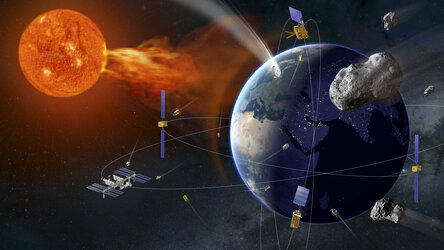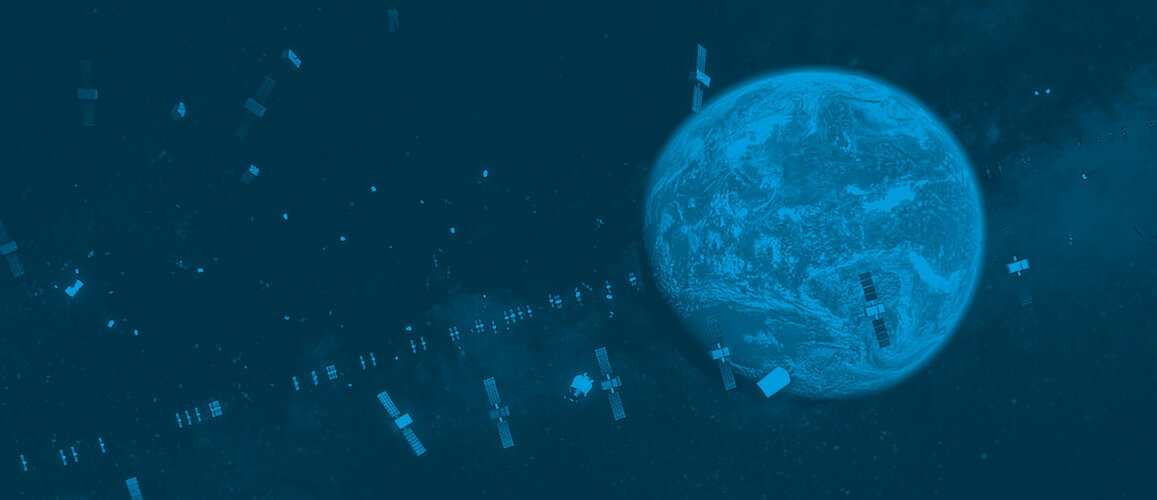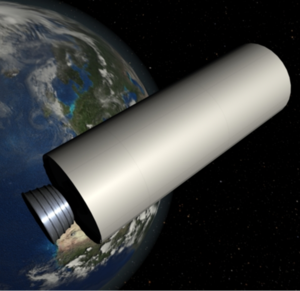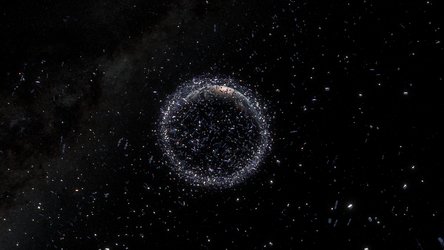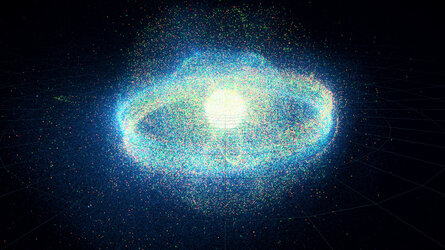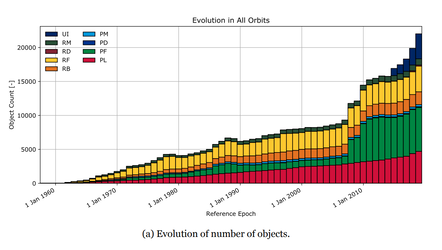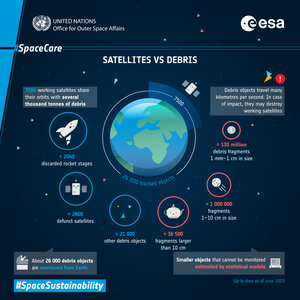ESA's Space Environment Report 2021
Imagine driving down a road which has more broken cars, bikes and vans lining the street than functioning vehicles. This is the scene our satellites face in Earth orbit. In fact, since the start of the space age there has been more debris, “space junk”, in orbit than operational satellites.
So how do we clean up this mess?
In 2002, a major step was taken to create some rules for our space highways. The Inter-Agency Debris Coordination Committee (IADC) published the Space Debris Mitigation Guidelines, which have since served as the baseline for space policy, national legislation, and technical standards.
The mitigation measures described in the guidelines set out how ‘space actors’ should design, fly, and vitally dispose of their missions in order to prevent the creation of further debris. They include ‘passivation’; ensuring no explosive fuel is left on-board at the end of a mission's life, performing ‘collision avoidance manoeuvres’ to prevent in-space crashes, and the requirement to remove spacecraft from low-Earth orbit within 25 years of the end of their lives, among others.
So how well is the international community doing? Every year, ESA publishes its Space Environment Report to give a transparent overview of global space activities, estimate the impact of these activities on the environment and determine how well international debris reduction measures are improving the long-term sustainability of spaceflight.
In summary
- Our current behaviour in space is unsustainable. If we continue as we are, the number of objects in orbit will make it hard to safely operate in space at all.
- The amount of objects in space; including their combined mass and their combined area, is steadily increasing.
- Improved surveillance technologies in the last decades mean smaller debris objects can be reliably tracked and catalogued. While we know of significant amounts of debris, we cannot necessarily trace back to the events that created them.
- The kind of objects launched to low-Earth orbit are changing: on average, satellites are getting smaller and are often launched into large constellations of thousands of satellites.
- On average over the last two decades, 12.5 non-deliberate, debris-creating events have occurred every year.
- The vast majority of rocket bodies and missions at high altitudes, in ‘geostationary orbit’, are being sustainably disposed of.
- Behaviours in low-Earth orbit are not changing fast enough: more than half of operators flying at this important altitude make no attempt to sustainably dispose of their missions.
We're launching more than ever

By every measure, the amount of debris in orbit is increasing, from the number of objects launched to their overall mass and the area they take up. A number of unidentified objects “UI” has also appeared in recent years. These objects are not necessarily new to space, but we are only recently able to observe them. Because of the time elapsed between their creation and our observation of them, it is difficult to trace their origins to a specific “fragmentation event”.
[PL = Payload (the “cargo”: usually one or many satellites that a rocket launches to space); PF = Payload Fragmentation Debris; PD = Payload Debris; PM = Payload Mission Related Object; RB = Rocket Body; RF = Rocket Fragmentation Debris; RD = Rocket Debris; RM = Rocket Mission Related Object; UI = Unidentified.]
Commercial satellites sky-rocket in low-Earth orbit
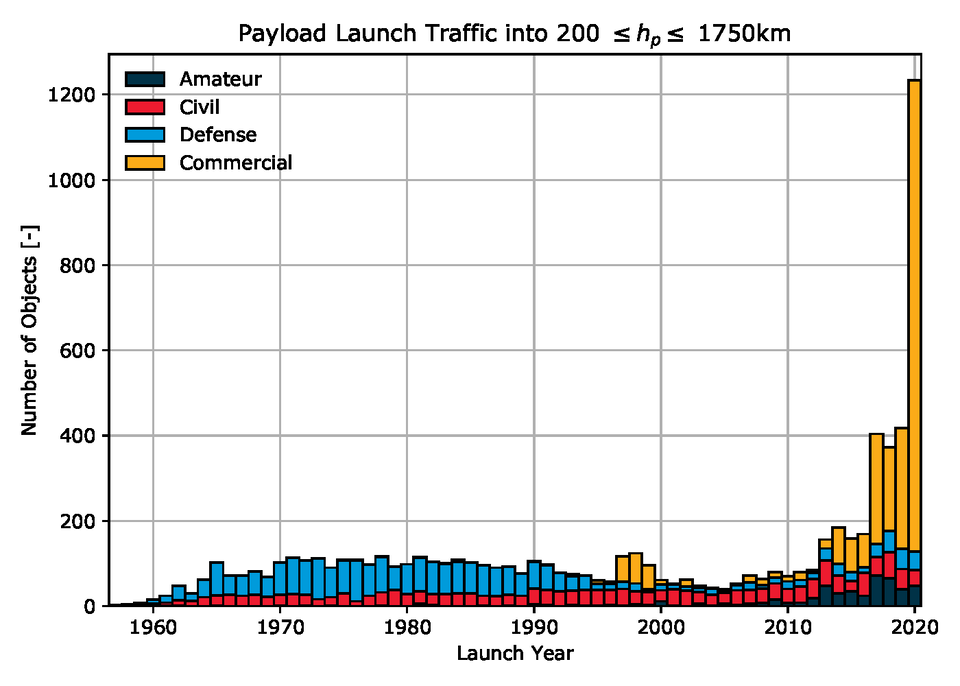
In the last two years, there has been an enormous increase in the number of commercial satellites launched to near-Earth space.
Many of these satellites are being launched into large constellations in order to provide communication services around the globe. While they bring great benefits, they pose a challenge to long term sustainability.
The changing shape of space missions

The first decades of spaceflight saw large missions launched into near-Earth orbit, with more than half weighing upwards of 1000 kg.
Today, such objects are a tiny fraction of the missions launched to space, with the vast majority being smaller satellites weighing between 100 - 1000 kg.
Space operators nearby are not doing enough

In low-Earth orbit, some “naturally compliant” objects safely burn up in the atmosphere without intervention. However, many others needs to be manoeuvred to safety from the ground.
More than half of space actors operating the latter 'non-compliant' missions make no attempt to sustainably dispose of their missions. The numbers are gradually improving, but it is not fast enough.
Rockets are now doing their job responsibly
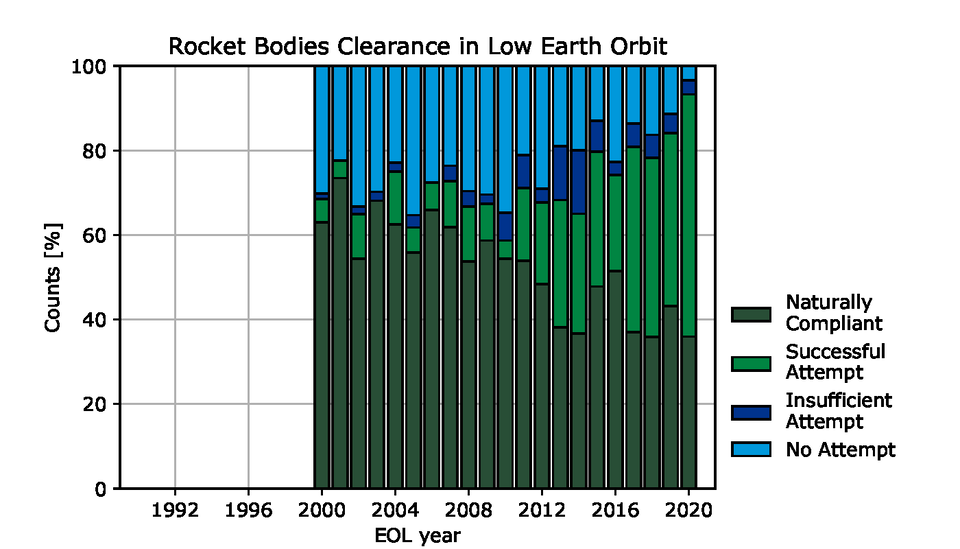
One of the most positive stories in debris mitigation has played out in the last 20 years, as rocket bodies – the largest objects we send to space – are now nearly all disposed of sustainably compared to less than 20% at the turn of the millennium.
This is because more rockets now perform a “controlled reentry” into Earth’s atmosphere.
Far away, satellites are being disposed of responsibly
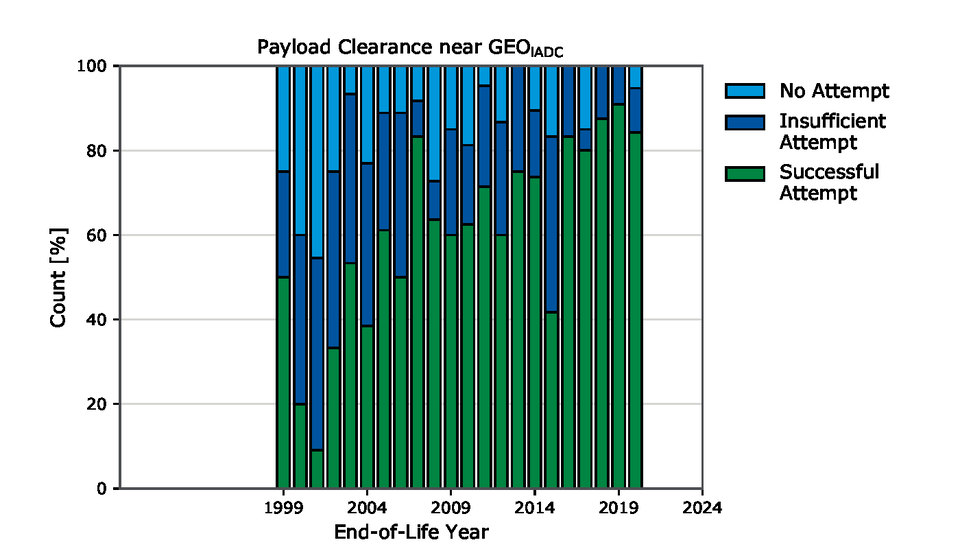
At high altitudes – in the geostationary orbit, mostly used for communication satellites – almost all space actors attempt to sustainably clear their missions from orbit, and the vast majority do so successfully.
This region has become highly commercialised, meaning there are clear financial incentives to keep this important region clear of debris and safe for current and future missions.
Our past is explosive
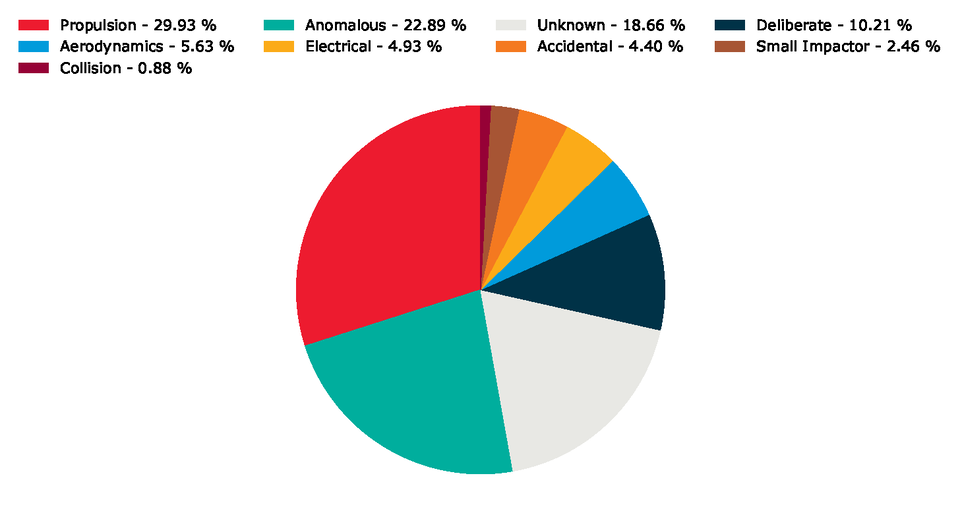
The millions of fragments of debris in orbit today are the direct result of 'fragmentation events' in the past. Of the roughly 550 events known to date, those caused by propulsion have created the greatest amount of space debris.
Energy left undisposed of on-board a satellite or rocket body can lead to explosions. For this reason, the international space debris mitigation guidelines require that satellites are 'passivated' at the end of their mission - for example by emptying fuel tanks and disconnecting batteries.
Over the last two decades the average number of fragmentation events has remained stable at roughly 12.5 per year. Depending on which type of event is counted, this number can be as low as 0.3 events per year; if the lifetime of debris created is taken into account, and if unexplained and 'systematic' events and are excluded (where the cause of the problem was known, and could have been avoided). This suggests that many debris-creating events with a large environmental impact are still taking place partly due to re-use of a design with known issues. With appropriate action, the number of events each year could be dramatically reduced.
Our future could be smashing
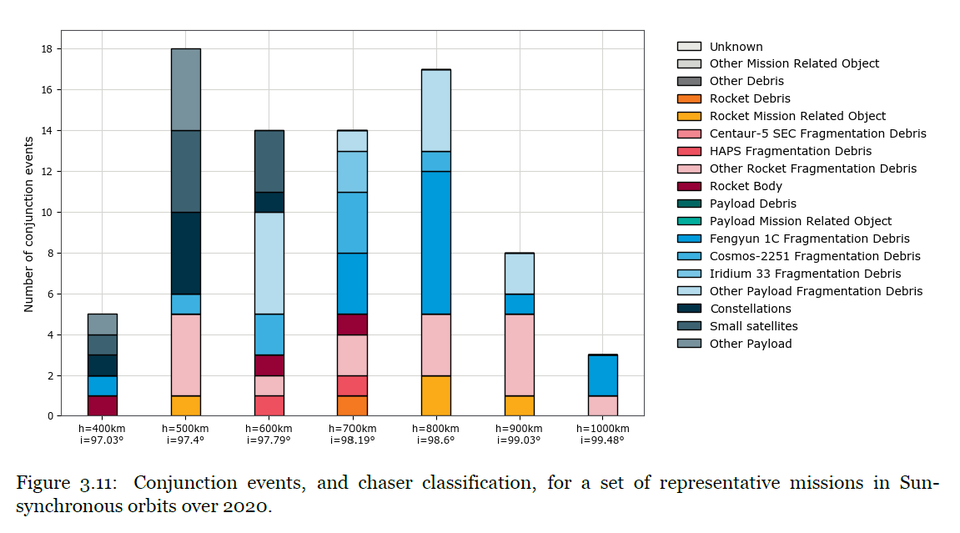
This plot shows debris objects large enough to be tracked from the ground that a hypothetical mission would encounter at various altitudes, and where they came from. A large proportion of debris objects in orbit today are leftover from just a couple “fragmentation events”, namely the infamous collision between satellites Cosmos-2251 and Iridium 33 in 2009 which created a huge cloud of debris, as well as various rocket related debris and the intentional explosion of Fengyun 1C in 2007. At lower altitudes, our fictional satellite would frequently encounter smaller satellites and constellations which need to be coordinated.
One vital solution is to ensure functional satellites are able to avoid collision with the debris that crosses their path. The process of ‘swerving’ a satellite out of the way of debris is time consuming but vital, and ESA is working on an automated system that will ensure collision avoidance remains practical as the number of satellites in orbit continues to rapidly increase.
Time to act

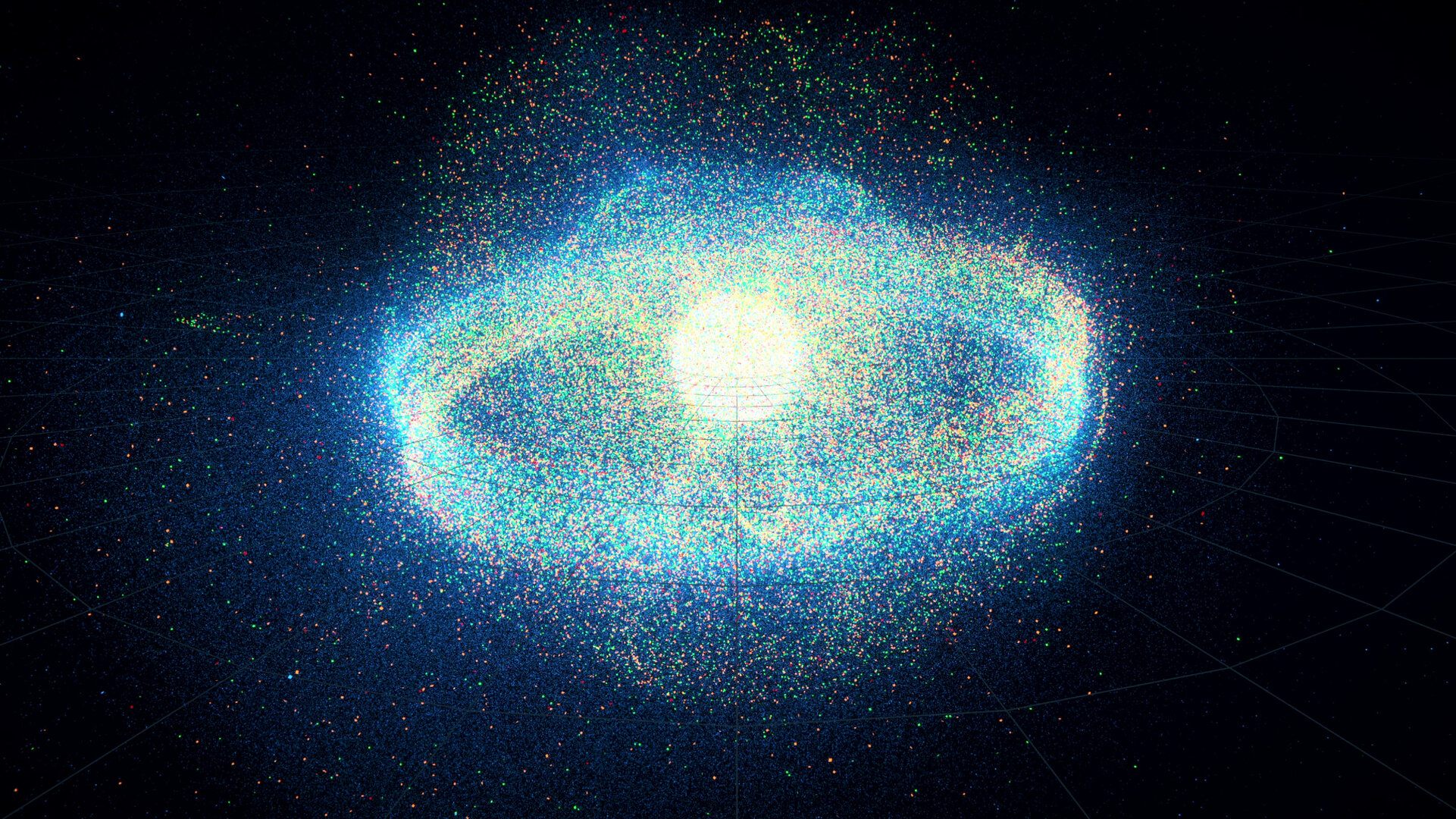
Access the video


